Abstract
Purpose: To develop and apply a methodology to calculate the heavy goods vehicle fleet required to meet South Africa’s projected road freight transport demand within the context of total surface freight transport demand.
Methodology: Total freight flows are projected through the gravity modelling of a geographically disaggregated input–output model. Three modal shift scenarios, defined over a 15-year forecast period, combined with road efficiency improvements, inform the heavy goods vehicle fleet for different vehicle types to serve the estimated future road freight transport demand.
Findings: The largest portion of South Africa’s high and growing transport demand will remain on long-distance road corridors. The impact can be moderated through the concurrent introduction of domestic intermodal solutions, performance-based standards in road freight transport and improved vehicle utilisation. This presupposes the prioritisation of collaborative initiatives between government, freight owners and logistics service providers.
Research limitations: (1) The impact of short-distance urban movements on fleet numbers is not included yet. (2) Seasonality, which negatively influences bi-directional flows, is not taken into account owing to the annual nature of the macroeconomic data. (3) The methodology can be applied to other countries; the input data are however country-specific and findings can therefore not be generalised. (4) The future possibility of a reduction in absolute transport demand through, for example, reshoring have not been modelled yet.
Practical implications: Provides impetus for the implementation of domestic intermodal solutions and road freight performance-based standards to mitigate the impact of growing freight transport demand.
Societal implications: More efficient freight transport solutions will reduce national logistics costs and freight-related externalities.
Originality: Develops a methodology for forecasting the heavy goods vehicle fleet within the context of total freight transport to inform government policy and industry actions.
Introduction
The competitiveness of the South African economy is hampered by high freight logistics costs, amounting to R393 billion or 11.1% of gross domestic product (GDP) in 2013, while freight logistics costs as a percentage of transportable GDP breached 50% since 2012 (refer Havenga 2015, for methodology, and Stellenbosch University 2015, for data update). The ratio of South Africa’s freight logistics costs relative to the country’s GDP is higher than the same ratio in developed countries; for example, the ratios of North America and Europe are 8.2% and 9.2%, respectively, but competitive when compared to other developing regions such as South America at 11.9% and Asia Pacific at 13.5% (2014 data) (Armstrong & Associates Inc. 2016). South Africa’s high freight logistics costs can be linked inter alia to the disproportionate transport demand relative to the size of the economy owing to inland mining activity and related industrial development far from coastal ports (Havenga & Pienaar 2012a). An added challenge, however, is the modal imbalance between road and rail owing to rail’s investment backlog of the past two decades and limited road–rail collaboration (Havenga 2015).
The total general freight transport task in South Africa in 2013 amounted to 260 billion tonne/km, as illustrated in Figure 1 (general freight excludes South Africa’s ring-fenced bulk coal and iron ore export rail lines, refer Table 1 in the methodology section). Long-distance transport accounted for 37% of these tonne/km (refer Figure 1), with road transport contributing more than three-quarters of this total (Stellenbosch University 2015). This has a severe impact on the country’s road pavement infrastructure with only approximately half of the national roads deemed to be in a good or very good condition, while the provincial road network is taking even more strain (refer Figure 2)1. Currently, 76% of the national road network is older than its 20-year theoretical design life (South African National Roads Agency 2015). The road maintenance backlog was estimated to be R78 billion (South African currency [ZAR]) in 2010 (nearly 3% of GDP) (Organisation for Economic Co-operation and Development [OECD] 2015).
 |
FIGURE 1: Geographical presentation of South Africa’s general freight flow density: two key freight corridors emerge. |
|
 |
FIGURE 2: South Africa’s national and provincial road pavement conditions: 2009 versus 2013. |
|
| TABLE 1: Definition of South Africa’s freight transport typologies. |
The total impact of growing road freight is also not evident because of the lack of a comprehensive road pricing system to manage the use of the transport network more efficiently through, for example, linking charges to truck road wear and productivity, safety and environmental characteristics, and providing incentives for the use of low-impact vehicles (Christensen 2010).
To improve the competitiveness of the country and address current logistics challenges, integrated planning for national infrastructure development is required to deal with land freight transport as a strategic priority (Havenga 2013). This implies the meticulous estimation of the total movement of goods and underlying commodity flows, as well as the modal composition thereof, including expected future truck flows (Chow, Yang & Regan 2010).
Significant effort was extended to inform the National Development Plan (NDP) (National Planning Commission 2013) of South Africa’s future physical infrastructure needs as well as rail rolling stock. The NDP is supported by Transnet’s Market Demand Strategy (which commits to creating rail, port and pipeline fixed and moving infrastructure ahead of demand) (Transnet 2013) and the South African National Roads Agency’s (2015) strategic plan for the management of the country’s national road infrastructure. The size of the heavy goods vehicle fleet that is required to satisfy South Africa’s projected road freight transport demand has however not been determined. Understanding future vehicle fleet requirements is of strategic benefit to policy development (specifically freight transport and environmental policies), congestion planning, infrastructure planning and to project fuel demand requirements and concomitant exposure to oil price risks (Hernández-Moreno & Mugica-Álvarez 2013). The purpose of this study is to develop scenarios for the estimated size of South Africa’s heavy goods vehicle fleet that will be required in 2030 within the context of total forecasted freight flows for 2030.
In the next section, an overview of key factors impacting the future heavy goods vehicle fleet is provided, followed by the translation of these factors into a methodology to estimate South Africa’s future heavy goods vehicle fleet. Subsequently, the results of the study are discussed, followed by concluding remarks.
Literature review
The logistics infrastructure of a country is a key enabler of economic growth. High costs associated with an inefficient transport system constrain national growth potential and international competitiveness (Jankauskaite, Gounder & Bean 2013). Major logistics infrastructure investments are characterised by long lead times and substantial costs and, ideally, need to be based on future freight transport demand (Havenga & Pienaar 2012b).
In the foreseeable future, growth in freight transport is inevitable. Meersman and Van de Voorde (2003) called for ‘more balanced, more efficient and less burdensome freight transport operations’ in an attempt to disrupt the automatic increase in road transport in excess of GDP. This disruption is mainly focused on modal shift to rail and inland waterways, enabled through full cost internalisation which presupposes increased investments in and efficiency from these alternative modes. A shift to more sustainable transport modes contributes to the ‘relative decoupling’ of road freight transport and GDP (as opposed to ‘absolute decoupling’ resulting from a change in the total demand for freight transport through changing spatial location strategies) (Verny 2003).
The engineering of a more sustainable modal balance is premised on an understanding of the level and composition of freight transport that will be generated in a likely future economic growth scenario (Meersman & Van de Voorde 2003; Piecyk & McKinnon 2013). For the purpose of this study, this is enabled through a forecasted spatially and sectorally disaggregated input–output model of the economy from which freight flows are derived.
The estimated capacity required per mode is then informed by inter alia government policies favouring specific transport modes owing to, for example, externality concerns, investments allocated to specific modes and technological developments such as higher capacity road vehicles (Business Monitor International 2013; Piecyk & McKinnon 2013). These elements, in turn, influence mode choice through their impact on transport cost, transport time and transport reliability (Truschkin & Elbert 2013).
For the purpose of forecasting the heavy vehicle fleet in this study, these elements of policy, investment and technology are reflected in two factors, that is, firstly the establishment of efficient intermodal solutions to reduce the number of heavy vehicles required for long-distance transport and, secondly, improved efficiencies within the road freight transport sector which will reduce the number of heavy vehicles required for the remaining freight. These drivers correspond with those identified by McKinnon (2007) to impact road tonne/km density and support national sustainability goals. The backdrop to these elements are provided in the ensuing subsections, followed by the instrumentation of these elements in the methodology section in order to estimate South Africa’s future heavy goods vehicle fleet.
Intermodal solutions to engineer modal shift
Intermodality allows at least two different modes of transport to be used in an integrated manner in a `door-to-door’ transport chain (European Commission 1997). In the case of domestic intermodal freight transport in South Africa, the transport modes specifically refer to road and rail freight transport. The process of intermodal transport consists of short-distance road feeder services to an intermodal terminal in a logistics hub where freight is consolidated into main-line block trains running the length of the corridor to a destination terminal. From the destination terminal, it is transported to distribution centres or end destinations via road transport.
With respect to modal shift, transport markets that consist of limited, dense origin–destination pairs that are separated by long distances therefore create opportunities for domestic intermodal solutions (Havenga, Simpson & De Bod 2012; Rodrigue, Slack & Blank 2008). Domestic intermodal transport can reduce transport costs, increase productivity and ease the load on national road infrastructure. It entails the development of intermodal logistics hubs in relevant locations and service standards that meet the requirements of freight customers (McKinnon 2009). A shift to more sustainable transport modes contributes to the ‘relative decoupling’ of road freight transport and GDP (as opposed to ‘absolute decoupling’ resulting from a change in the total demand for freight transport through changing spatial location strategies) (Verny 2003). In South Africa, the introduction of domestic intermodal solutions have been on the agenda for more than 2 decades, yet progress has been minimal (Havenga et al. 2012).
Holguin-Veras, Paaswell and Perl (2008) identified a number of challenges that inhibit intermodal innovation. These relate to (1) government–private industry dynamics with regards to the balance between regulation and the profit motive, as well as the tendency to focus on a modal regulatory model instead of systemic considerations of intermodal and multimodal solutions; (2) the size and complexity of the transport industry and its investment requirements; (3) a lack of identification between private industry success and national economic objectives, often resulting in adversarial interactions as opposed to jointly working towards solutions; and (4) mismatched planning horizons where, frequently, the full industry planning horizon (short, medium and long term) is encompassed in public short-term to medium-term cycles (2–5 years). The very long investment horizons of 20–50 years do not readily feature in road freight operators’ planning cycles, as they are typically not involved in the infrastructure creation.
Related to this are the questions of funding and the fair distribution of costs and benefits. While intermodal innovations may lean more towards long-term net societal benefit, the private business case must also be viable. In addition, the collaboration component is readily mooted in literature, but challenging to implement, as competitors need to align strategic objectives, synchronise services, share investments (in physical or information and communication technology infrastructure) and share profits. A further complication is that the shift to intermodal services affects the service that shippers receive, influencing, for example, inventory management and delivery times (Van Binsbergen et al. 2014).
The main obstacle hampering successful implementation of intermodal services therefore seems to be an issue of collaboration, both between the public and private sector, and between role players within the private sector.
Improved efficiencies within the road freight transport sector
The development of performance-based standards (PBS) was initiated in Canada approximately 3 decades ago to simplify and harmonise heavy vehicle regulations, while improving safety standards and environmental performance (Woodrooffe 2012). Performance-based standards are based on the principle that a modern regulatory framework can improve compliance by providing flexibility to enable these improvements, that is, the end, not the means, are specified. Many higher capacity vehicles have equivalent or even better intrinsic safety characteristics than most ‘workhorse’ trucks (Australian Capital Territory 2014; Christensen 2010). Performance-based standards hold great opportunities to increase transport efficiency in conjunction with modal shift imperatives. Performance-based standards demonstrations illustrated fuel efficiency improvements, reduced road wear, larger payloads and reducing the amount of truck traffic on the road (Kotze 2012). The specific goals in South Africa are for PBS to improve system efficiency by optimising truck payloads, improving truck safety and protecting road infrastructure through innovative vehicle design and technologies (Nordengen, Prem & Mai 2008).
In a business-as-usual scenario based on mean responses from a Delphi survey, Piecyk and McKinnon (2010) estimated that the most likely outcome of a set of factors that will impact growth in road freight transport and related emissions is a marginal reduction of approximately 10% in CO2 emissions despite an increase of 21% in road tonne-km between 2007 and 2020. This is attributable to substantial improvements in vehicle utilisation and fuel efficiency, shifts to alternative transport modes and lower carbon fuels which would offset the growth in road CO2 emissions (but would still fall significantly short of the target of an 80% reduction in CO2 emissions in 2050 set by the United Kingdom Department of Transport).
Liimatainen and Pöllänen (2010) highlight that the major drivers responsible for the improvement in energy efficiency of road freight transport in Finland between1995 and 2002 were changes in the level of empty running and vehicle fuel efficiency. They emphasise the importance of making decisions that promote energy efficiency on every level of logistics management. Planning supply chains efficiently, optimising vehicle utilisation, minimising empty running, choosing vehicles of the right size and type for each operation, and motivating drivers to drive economically, have a much greater potential to increase energy efficiency than purely technological measures which enhance the fuel economy of trucks.
Schäfer and Jacoby (2006) estimate that the energy intensity of the baseline heavy truck in their study can be reduced by 55% through reduced rolling resistance, advanced diesel engines, more efficient auxiliaries, improved aerodynamics and advanced transmission. This, however, is concomitant with an 18% increase in the retail price of the heavy truck. A further reduction of 10% in energy intensity can be attained if vehicle speed is controlled to a maximum of 90 km/h. (While the associated increase in retail price would be negligible, the lower maximum vehicle speed would require more drivers to ship the same freight volume within the same amount of time.)
The various elements of improved efficiencies can be incorporated under the ambit of PBS and can result in more efficient use of road freight transport, ultimately impacting vehicle fleet numbers.
The purpose of this research is to determine the impact of these change drivers on the future demand for heavy goods vehicles in South Africa. The related research methodology is described in the next section.
Research methodology
The research makes use of an existing quantitative data set that estimates total surface freight transport demand for the selected forecast period. This includes data from South Africa’s National Freight Flow Model (NFFM) and Freight Demand Model (FDM) (described in subsequent sections). The study only considered surface freight transport by road and rail; South Africa has no inland waterways, and coastwise traffic and airfreight are negligible in terms of volumes and pipeline transport is ring-fenced.
The methodology used to estimate the future heavy goods vehicle fleet is based on the following key steps, as discussed in subsequent sections and summarised here: (1) Transport supply is modelled based on observed truck movements and obtaining actual rail data (NFFM); (2) Transport demand considers the flows of commodities from economic supply regions (production and imports) to economic demand regions (consumption and exports) (FDM); (3) Segmentation divides these freight flows into typologies to determine modal shift opportunities; (4) Scenario development evaluates the impact on future road surface freight transport demand of different modal shift scenarios. The future national heavy goods vehicle fleet was calculated using the resultant road market share figures; and (5) An ideal scenario incorporates the identified change drivers that could have an effect on the future heavy goods vehicle fleet size and structure.
The combination of modelling techniques to estimate freight transport demand applied in this research addresses the concerns by Holguın-Veras, Zorrilla and Thorson (2005) that vehicle-based models of freight demand fail to model the underlying economic behaviour from which the demand is derived, while commodity-based models fail to realistically account for vehicle activities, specifically owing to its inability to account for empty hauls. The outstanding issue in the research is freight vehicle flows in urban settings which have a significant societal impact.
Surface freight transport demand estimates
Transport supply was measured according to the NFFM. This model defines surface freight transport based on tonnes and tonne/km as measures of flow to give a comprehensive description of South Africa’s surface freight flow market space (Havenga & Pienaar 2012a). The freight transport typologies identified are corridor, rural, metro and rail export machines (refer to Table 1). Inputs for the model include South African National Roads Agency traffic counts to determine road freight flows and actual rail data for rail freight flows, enabling market share analysis per typology. This model is commodity blind but, because it is based on actual traffic counts, it provides a measure of verification for the results from the commodity-flow model described below.
Transport demand measurement is obtained from the FDM that has commodity granularity to supplement the NFFM (Havenga 2013). Freight flows are derived via gravity modelling from a geographically disaggregated I–O (input–output) table according to commodity type. Five-yearly forecasts of the I–O tables were done up to 15 years and converted into volumetric terms. The sectoral economic forecasts are verified through a process of hindcasting and corroboration with available macroeconomic forecasts. The model produces a representation of supply and demand by weight, modes used for transport, typological movements of the freight and the type of commodities involved. The FDM includes observations for freight flows on 22 corridors (bi-directional), within seven metropolitan areas and within ten rural regions. The cargo type transported was identified according to nine different cargo types, namely, agricultural dry bulk, heavy break-bulk, light break-bulk, liquid bulk, mining dry bulk, open skip bulk, palletised, refrigerated and roll-on/roll-off (RORO). The development of future scenarios driven by underlying growth trajectories per industry, and corroborated by expert opinion, is a very robust forecasting approach, in contrast to extrapolating historical trends or relationships (Piecyk & McKinnon 2010).
The segmentation of freight flows to inform mode choice is based on the economic fundamentals that enable intermodal freight transport, that is, uniform, high-density freight flows over longer distances (Brown & Hatch 2002; Button 2010). Uniform cargo can be easily consolidated into standardised units including palletised and containerised cargo. These fundamentals leverage rail’s genetic technologies, that is, bearing, guiding and coupling, as the long-distance mode critical to realise intermodal solutions in South Africa. Bearing supports axle-loads of up to 40 tonnes (and therefore density) but at relatively low speed, while guiding refers to the wheel-on-track differentials (and therefore speed of movement) but with relatively low axle-loads. When bearing and guiding are added to coupling, this translates into long trains with high volumes (Van der Meulen 2007). Bearing, guiding and coupling in optimal combination therefore support heavy intermodal or double-stack container trains.
The I–O model provides a low, likely and high economic growth scenario; for the purposes of this study, the likely scenario was employed to model the impact of different road and/or rail scenarios on the size of the heavy goods vehicle fleet. The three scenarios are defined as follows:
- Scenario 1: Business-as-usual scenario – There is growth in both road and rail, yet market share remains the same over the forecast period as no dedicated modal shift interventions are introduced owing to policy inertia. Of the total transport task of 362 billion tonne/km in 2013, road and rail general freight accounted for 260 bn tonne/km, the rail export lines for 90 bn tonne/km and the remainder was transported by pipelines, conveyor belts and coastal shipments. Of the total transport activity, road tonne-km market share was 64% (Stellenbosch University 2015).
- Scenario 2: Optimal modal split – This scenario assumes a shift of all high-density, long-distance freight from road to intermodal solutions with the long-distance portion on rail (refer section ‘Intermodal solutions to engineer modal shift’). A high-level analysis indicates feasibility to shift 50% of the long-distance heavy intermodal and siding-to-siding break-bulk traffic onto the rail network with large cost saving opportunities (Havenga 2012). (The maximum modal shift or saturation level following which policy actions no longer influence the modal share ceteris paribus (Truschkin & Elbert 2013) still needs to be determined for South Africa).
- Scenario 3: Worst-case scenario – All freight growth is transported on road with rail remaining stagnant.
The future national road transport demand can now be estimated, as described in the next section.
Quantification of the heavy goods vehicle fleet to serve future road surface freight transport demand
The actual transport task each combination of vehicle type and configuration are able to complete can be calculated based on payload, annual kilometres travelled and load factor. These parameters are used to determine the annual transport capacity per vehicle type using equation 1:
Where:
TCu = annual transport capacity per vehicle type
Du = distance travelled per annum for each vehicle type, measured in kilometres
Pu = maximum payload per vehicle type
lu = load factor per vehicle type (indication of degree of empty running).
The parameters related to annual vehicle capacities are validated according to research done by the Road Freight Association of South Africa (2013). The vehicle parameters were used to convert the surface freight transport demand for road transport from a transport task to estimated vehicle quantities required for the fleet, according to equation 2:
Where:
Fqu = fleet quantity per vehicle type
Ttu = total transport demand per vehicle type estimated by NFFM & FDM
Tcu= transport capacity per vehicle type.
The vehicle fleet for 2014 to 2030 was calculated, and grouped according to corridor, metro and rural transport activity. Distinctions were made between directional flows of traffic on corridors, illustrating the imbalance of cargo flows, and ultimately demand for road transport on various routes.
The total heavy goods vehicle fleet was then quantified based on the number of axles required to complete the task as unit of measure for each vehicle type using equation 3:
Where:
Fa = total fleet size measured in number of axles
Fqu = fleet quantity per vehicle type
au = number of axles per vehicle type.
The data used to calculate the expected fleet size for future scenarios considered tonnes and tonne/km as the only variables to determine the corresponding transport task, although volumetric constraints as opposed to weight limitations can bind vehicle capacity. Changes in average density of freight through time do occur owing to changes in the nature of economic activities and distort the relationship between tonne/km and vehicle/km travelled (Piecyk & McKinnon 2013). This has not been modelled yet for South Africa.
Change drivers that could influence the actual fleet required to meet future transport demand were identified in the ‘Literature review’ section. Through quantitative analysis of the base data set, opportunities for promoting the change drivers were identified, as described in the next section.
Analysis of change drivers
Domestic intermodal transport activity
In this article, the definition of domestic intermodal transport echoes that of Macharis and Bontekoning (2004), namely, that it reflects the combination of two modes of transport in a single transport chain, without a change of container for the goods, with the long-distance service provided by rail (in the case of South Africa, with no inland waterways), and with the shortest possible initial and final journeys by road.
High-density, long-distance corridor freight flows are attractive candidates for intermodal transport. Previous research by Havenga et al. (2012) identified the Durban–Gauteng and Cape Town–Gauteng corridors as most attractive for intermodal solutions. Both these corridors indicated high densities with relatively low current rail market share. Cargo suitable for intermodal solutions was identified as rail-friendly freight with the ability to be easily consolidated into standardised units. Standardised forms include palletised and containerised cargo. The remaining road transport task after the promotion of intermodal transport activity was quantified by subtracting the road transport task of suitable rail-friendly cargo on the Durban–Gauteng and Cape Town–Gauteng corridors from the current road transport task linked to these corridors, as described by equation 4:
Where:
RC = remaining road transport demand per corridor
RCpre = road transport demand per corridor estimated by NFFM & FDM pre-shift
RCrail–friendly = rail-friendly cargo per road corridor estimated by NFFM and FDM.
The premise of the intermodal change driver modelled in this article is therefore that appropriate domestic intermodal technologies can be developed to transfer high volumes, palletisable or containerisable freight from road to rail, especially over longer distances, in order to alleviate the macroeconomic transport burden. The identification of this freight is enabled by the level of disaggregation in the FDM where the split among freight modes is derived directly from the sectoral flow within the I–O model. This addresses a shortcoming in the model of Schäfer and Jacoby (2006) who, in their estimates of a CO2 constrained scenario, extrapolate the declining shares of railways and waterways as a function of tonne-km (the latter being closely coupled to GDP). The rising share of truck-based tonne-km is then calculated as a residual of the other two modes (the share of airborne tonne-km is negligible), resulting in the share of trucks increasing based on the premise that waterways and railways typically ship raw materials to energy-intensive industries, while heavy trucks typically transport the higher-value outbound goods.
Implementation of performance-based standards
In the South African market, the main vehicle types of relevance to obtain PBS benefits are the six-axle articulated vehicle configuration and the seven-axle interlink configuration. To obtain PBS benefits, a minimum of one axle was added to each configuration; the corresponding PBS configurations will therefore consist of a quad axle semi-trailer and tridem-tandem interlink, respectively. The assumption is that only 20% of the vehicles in these relevant vehicle types will be able to benefit from PBS owing to inter alia abnormal load regulations, limiting the use of these extra heavy vehicles to national roads (Nordengen 2013).
The advantage of PBS was accepted as an average 15% payload increase for the above-mentioned vehicle configurations (Nordengen et al. 2008). The vehicle parameters were adjusted to incorporate the increased payload capacities for the relevant vehicle configurations. The larger capacity (tonne/km) for the proposed PBS configurations was calculated based on the current load factors and annual kilometres travelled while increasing the payload by 15%.
The gain in transport capacity through PBS for the applicable vehicle types were calculated using equation 5 and estimated fleet sizes reduced accordingly.
Where:
gPBSv = gain in transport capacity through the implementation of PBS
Tcv= transport capacity per vehicle type
20% = % of vehicles in relevant vehicle configurations to benefit from PBS
15% = average % payload increase owing to PBS for relevant vehicle configurations.
Vehicle utilisation improvements
For the purpose of this study, load factor and annual amount of kilometres travelled per vehicle were used as parameters to measure vehicle utilisation. A theoretical load factor was calculated for each scenario to consider different levels of vehicle utilisation. The calculation also considered higher annual kilometre estimates to evaluate the combined effect of kilometres travelled and load factor on overall vehicle utilisation.
A theoretical load factor was calculated for each corridor per vehicle application type based on the transport capacity required to complete the transport task in each direction of the 22 different corridors identified in the FDM (refer equation 6). Unbalanced directional freight flows will negatively influence the theoretical load factor. Flow balance was not based on pure commodity-type flows considering that a single vehicle type can transport an array of different products. The freight flow balance was compared for each scenario. The 22 corridors were used to calculate a weighted average load factor for each vehicle application type based on the size of the transport task per corridor. The weighted average will reflect the highest possible theoretical load factor. The weighted average load factor will be used together with the vehicle parameters referred to in the ‘Quantification of the heavy goods vehicle fleet to serve future road surface freight transport demand’ section to calculate the fleet size required to complete the transport task should the best possible load factor be achieved for each scenario. Because of the absence of directional flow information for the rural and metropolitan regions, load factor calculations included only adjustments based on corridor flow observations. Flow balance was calculated through comparison of the demand for different vehicle applications only. The comparison process therefore assumed the total fleet required would consist of the optimum combination of different vehicle configurations to achieve the theoretical load factors:
Where:
lv = load factor, indication of degree of empty running
Ttv = total transport demand per vehicle type estimated by NFFM & FDM, per corridor direction
Tcv = transport capacity per vehicle type.
The theoretical values compared to current weighted average load factors assumed by industry did not indicate prominent trends that can provide opportunities to improve vehicle utilisation based on load factor. Vehicle utilisation with respect to actual load factors seems to be on par with what is theoretically possible. This conservative approach is deemed appropriate as other factors are expected to negatively impact vehicle utilisation such as a continued reduction in lead times, greater variability of order sizes and higher demand for ‘just-in-time’ (JIT), which will all impact efficient coordination between load and vehicle capacity (Piecyk & McKinnon 2010).
The fact that the load factor has been calculated, however, will allow this research to be extended to incorporate the effects of emissions modelling. This will address a concern noted by Ligterink, Tavasszy and De Lange (2012) that, in most studies, emissions are still measured by varying vehicle speed and acceleration, while payload is assumed constant, leaving too little variation in the measurement data to derive information on the effect of changes in vehicle weight after loading and unloading. Their study confirms the relevance of a payload-dependent model for the effective modelling of heavy duty truck emissions.
The distance travelled per annum by road freight service providers is considered a component of logistics cost. The higher South African logistics cost is therefore partially because of the lesser distance transport operators are able to achieve within the borders of the country per annum. The average distance travelled in Europe by road transport operators are 200 000 km compared to 120 000 km in South Africa (Kotze 2012). The actual distances travelled for vehicles doing planned line-haul as considered in this study can be much closer to the 200 000 km mark. The industry average of 120 000 km is influenced by the very low amount of kilometres travelled by vehicles doing unplanned short-distance tasks. For the purpose of this study, the heavy goods vehicle fleet was quantified based on a moderate 30% increase in annual distance travelled by 2030 as part of vehicle utilisation improvements. The improved levels of vehicle utilisation were then calculated using equation 7:
Where:
Tcv = transport capacity per vehicle type
Dv = distance travelled per annum for each vehicle type, measured in kilometres
Pv = max payload per vehicle type
lv = load factor, indication of degree of empty running per vehicle type.
Heavy goods vehicle fleet ideal future
In order to incorporate all the change drivers, an ideal future for the heavy goods vehicle fleet was defined. This is compared to the status quo in the results section.
- The status quo refers to the road transport task for 2014 which was modelled at 161.2 bn tonne/km (a 64% road tonne/km market share); the PBS benefits and vehicle utilisation improvements are not included.
- The ideal future modelled a road transport task for 2030 at 190.9 bn tonne/km, where the national railway gains its ideal market share as per scenario 2 in the ‘Surface freight transport demand estimates’ section (which includes the domestic intermodal change driver described in the ‘Analysis of change drivers’ section), and road PBS benefits and vehicle utilisation improvements are implemented, as described in the ‘Analysis of change drivers’ section.
Results
Quantification of the demand for road transport
The resulting road transport task in tonne-km for each defined modal shift scenario was calculated. The base year, and the three possible end-states, is illustrated in Figure 3. The corridor market share is expected to remain around two-thirds of the road transport task.
 |
FIGURE 3: South Africa’s current and projected road freight transport task in tonne-km. |
|
The South African economy continues to include a large transportable GDP driven by commodity trade, growth in manufacturing and increased consumption by the growing middle-class population. Transport demand therefore showed positive growth across all scenarios over the forecast period. The highest economic growth rate, and the resulting freight flow growth, presented in the model for the first 5-year period in each scenario compared to the last ten years. This can be an indication of the South African economy reaching more mature levels of economic activity and experiencing a reduced contribution by the transportable GDP as the intangible services sector grows.
Estimated heavy goods vehicle fleet
As illustrated, the growing transport demand will translate into a growing tonne-km demand for road transport under all three scenarios, with the biggest demand remaining on the corridor routes. A graphical illustration of the estimated national heavy goods vehicle fleet required for each of the three modal shift scenarios is shown in Figure 4, indicating the growth in axles required to service the road tonne/km demand depicted in Figure 3. The total heavy goods vehicle fleet was quantified based on the number of axles required to complete the task as the unit of measure for each vehicle application as per equation 7 in the methodology.
 |
FIGURE 4: South Africa’s projected road transport fleet size based on modal shift scenarios. |
|
In order to take the change drivers of increased intermodality, PBS benefits and improved vehicle utilisation into account, the heavy goods vehicle fleet per vehicle application type for the ideal scenario (defined in the ‘Heavy goods vehicle fleet ideal future’ section) was calculated. Figure 5 illustrates the estimated fleet size for the status quo and ideal future grouped according to vehicle type. This resulted in a total estimated fleet size of 315 572 axles for 2030, compared to the 2014 status quo fleet size of 349 172 axles. This is a positive outcome as the growth in road tonne/km can be served with fewer axles than required in 2014 provided that modal shift is engineered, and the road freight sector adopts technological advances and improves vehicle utilisation. The top contributors to the national transport task are heavy break-bulk, mining dry bulk and palletised goods, which result in a national heavy goods vehicle fleet dominated by tippers, volume vans, flat decks and drop sides with a combined market share of approximately 85%.
 |
FIGURE 5: Summary of South Africa’s heavy goods vehicle fleet – 2014 actuals versus 2030 ideal future estimate. |
|
Data validation
To validate the accuracy of the forecasted data, a comparison between the 2014 model forecast and actual 2015 trailer fleet in South Africa was done. Similarity between the sizes of these two fleets will confirm the accuracy of the data.
The line-haul freight considered in this study when allocated to vehicles for scenario 1 in 2014 results in an 82 821 trailers requirement (scenario 1 assumes a constant 2013 rail market share, so is a reflection of the status quo). When also considering the collection and distribution freight of just over 70 bn tonne/km (Stellenbosch University 2015) which was not considered in this study, with average annual tonne/km of 40% of that of line-haul (owing to much shorter distances and slower speeds), an additional 76 033 trailers is required. Cumulatively, the FDM data estimate a total requirement of 158 854 trailers. This is approximately 10% less than the recorded number of 177 815 for October 2014 which includes all trailers, even those not roadworthy or those not in use. This comparison between the derived volumes and the recorded number is thus seen as sufficiently close to justify the use of these data for this purpose. In order to align with the base data, it can be assumed that the granularity of the model is sufficient to represent the correct industry structure but undercounts by 10% owing to higher efficiency on all parameters.
Discussion
The projected increase in transport demand translates into a projected increase in tonne/km demand for road transport under all three scenarios, with the biggest demand remaining on the corridor routes. The total estimated fleet size in an ideal scenario (implementing the change drivers of increased intermodality, PBS benefits and improved vehicle utilisation) equates to 315 572 axles for 2030, compared to the 2014 status quo fleet size of 349 172 axles. This means that the projected growth in road tonne/km can be served with fewer axles than required in 2014 provided that the change drivers are implemented. The top future contributors to the national transport task will be heavy break-bulk, mining dry bulk and palletised goods, resulting in a national heavy goods vehicle fleet dominated by tippers, volume vans, flat decks and drop sides.
It is therefore unlikely that the South African economy will reach a decoupling situation where economic growth is achieved without corresponding demand growth for road freight transport activity. This is not unique to South Africa. The freight transport task is growing rapidly in most regions globally and road haulage is deemed most suited to serving much of the demand (Australian Capital Territory 2014, in reference to Australia; Christensen 2010, in reference to the EU).
It does however indicate that, given the structure of South Africa’s freight transport market, the shift of rail-friendly freight back to rail (enabled through investments in intermodal solutions) will provide substantial relief to road corridor density. These investments need to be based on a balance of productivity benefits, infrastructure costs, and safety and environmental costs and benefits. Road and rail infrastructure and rolling stock investments therefore need to be developed concurrently (Christensen 2010). The results of this research provide important impetus to the domestic intermodal debate as it highlights the projected density challenges of the road freight transport system.
Conclusion
The results in the study confirmed the dependence of the South African economy on the road transport industry. Road transport demand showed positive tonne/km growth across the defined modal shift scenarios during the forecast period up to 2030.
The modelled impact of (1) an intermodal shift on high-density, long-distance routes, (2) the implementation of performance-based standards and (3) initiatives aiming to improve vehicle utilisation imply a 1% compound annual growth rate (CAGR) reduction in axle numbers over the forecast period 2014–2030, while serving more road tonne/km. The combined benefits related to the new developments can therefore assist in relieving the transport burden of South Africa although the impact will be limited to specific corridors and applications. Corridor market share is however expected to remain around two-thirds of the road transport task.
On a macro-logistics scale, the implementation of these change drivers can assist in preventing misuse of and damage to especially road infrastructure, and enable a shift towards more efficient and sustainable use of the available infrastructure, that is, dense, long-distance transport on rail with road servicing the end points. This will require collaboration and support from all stakeholders to establish a national freight transport system that is capable of handling the transport task sustainably without sacrificing competitiveness. In the longer run, the irresponsible use of transport resources should be addressed through a culture of more sustainable consumption, the impact of which should be included in future research. In this regard, the internalisation of externality costs can play a significant role in cost trade-offs and modal shift, influencing the vehicle fleet forecast.
Practical implications and contribution to body of knowledge
The practical implications of the research results affect both government and industry. From an industry perspective, it encourages the implementation of collaborative road/rail solutions, and a continued focus on the implementation of PBS by road freight transport operators to ease the burden on transport infrastructure. Sustained growth in road freight transport over the long term is however untenable, not least from a space constraint and environmental impact point-of-view. This supports the growing global discourse to move towards different measures of progress and well-being, with one of the end goals being a reduction in final consumption demand (Havenga 2015). It also indicates that the road versus rail discussion has a much broader scope than simply the competitive freight transport landscape – it could both be a driver of or an obstacle to sustainability.
The application of this methodology underscores the value of systemic national freight transport demand modelling as it enables joint transparent planning across all modes. The disaggregation of the impact of individual change drivers is planned for the next phase. This will enable the quantification of context-specific trade-offs between, for example, technological developments (such as PBS) and policy interventions (such as modal shift) to facilitate an informed macro-logistics debate. It also supports the view that infrastructure forecasting cannot be divorced from long-term economic demand projections given the long lead times for infrastructure investments and, if the results of these forecasting efforts are unsatisfactory from a macroeconomic point-of-view, it creates the impetus for scenario modelling and the development of interventions to attain the desired scenario.
Future research
The following medium-term research areas have been identified:
- Disaggregating the impact of change drivers to enable decision-making trade-offs.
- Short-distance urban deliveries and pick-ups add a considerable burden to the total road transport task and needs to be added to inform metropolitan planning.
- The impact of the internalisation of externality costs on modal shift and resulting vehicle fleet requirements need to be explicitly modelled.
- Expand research on current weighted average load factors to inform vehicle utilisation potential. This could be done based on a representative sample of freight vehicles, or through a Delphi survey with logistics operations personnel, depending on the available funding.
The following long-term research areas have been identified:
- Research the impact of low-density goods on vehicle utilisation.
- Translating the vehicle fleet into road densities for the different scenarios, and adding passenger vehicle estimates, to understand the mobility impact given current road pavement infrastructure investment plans.
- Identifying and modelling options for reducing the demand for transport through, for example, reshoring, final consumption reduction and spatial reorganisation.
- The forecasting model assumed a similar supply chain structure throughout the forecasting period. To consider changes in the supply chain structure, such as the establishment of industrial development zones aimed at shifting production closer to ports of exit, the input–output model that drives the eventual flows need to be recalculated.
Acknowledgements
The Freight Demand Model, on which the vehicle fleet estimates are based, is made possible by annual financial support from Transnet. The modelling and interpretation of results are the authors’ own.
Competing interests
The authors declare that they have no financial or personal relationships that may have inappropriately influenced them in writing this article.
Authors’ contributions
J.H.H. was responsible for methodology design and strategic interpretation. P.P.T.L-R. was responsible for methodology design, research, modelling and writing. Z.P.S. was responsible for methodology design, input data extraction from existing models, data interpretation.
References
Armstrong & Associates Inc., 2016, ‘Global 3PL market size estimates’, viewed 20 June 2016, from https://www.3plogistics.com/3PLmarketGlobal.htm
Australian Capital Territory, 2014, ‘Transport for Canberra: ACT freight strategy discussion paper’, July 2014. ACT Government – Environment and Planning, viewed 28 February 2016, from https://www.transport.act.gov.au/__data/assets/pdf_file/0004/615631/ACT-Freight-Strategy-Discussion-Paper_ACCESSpdf.pdf
Brown, T.R. & Hatch, A.B., 2002, The value of rail intermodal to the US economy, The American Association of State Highway and Transportation Officials: Special Committee on Intermodal Transportation and Economic Expansion, viewed 24 July 2017, from http://intermodal.transportation.org/Documents/brown.pdf
Business Monitor International, 2013, South Africa Freight Transport Report Q1 2014, Business Monitor International, London.
Button, K., 2010, Transport economics, 3rd edn., Edward Elgar, Cheltenham.
Christensen, J., 2010, ‘The OECD/ITF study: Moving freight with better trucks’, paper presented at the Conference on Future Heavy Trucks, Jönköping, Sweden, 25th August, viewed 28 February 2016, from http://www.nvfnorden.org/lisalib/getfile.aspx?itemid=4011
Chow, J.Y., Yang, C.H. & Regan, A.C., 2010, ‘State-of-the art of freight forecast modeling: Lessons learned and the road ahead’, Transportation 37(6), 1011–1030. https://doi.org/10.1007/s11116-010-9281-1
European Commission, 1997, ‘Communication from the Commission to the European Parliament and the Council: Intermodality and intermodal freight transport in the European Union’, viewed 13 March 2018, from http://aei.pitt.edu/4717/1/4717.pdf
Havenga, J.H., 2012, ‘Rail renaissance based on strategic market segmentation principles’, Southern African Business Review 16(1), 1–21.
Havenga, J.H., 2013, ‘The importance of disaggregated freight flow forecasts to inform transport infrastructure investments’, Journal of Transport and Supply Chain Management 7(1), Art. #106, 7p. https://doi.org/10.4102/jtscm.v7i1.106
Havenga, J.H., 2015, ‘Macro-logistics and externality cost trends in South Africa – Underscoring the sustainability imperative’, International Journal of Logistics Research and Applications 18(2), 118–139. https://doi.org/10.1080/13675567.2015.1015509
Havenga, J.H. & Pienaar, W.J., 2012a, ‘The creation and application of a national freight flow model for South Africa’, Journal of the South African Institution of Civil Engineering 54(1), 2–13.
Havenga, J.H. & Pienaar, W.J., 2012b, ‘Quantifying freight transport volumes in developing regions: Lessons learnt from South Africa’s experience during the 20th century’, Economic History of Developing Regions 27(2), 87–113. https://doi.org/10.1080/20780389.2012.745666
Havenga, J.H., Simpson, Z.P. & De Bod, A., 2012, ‘South Africa’s domestic intermodal imperative’, Research in Transportation Business & Management 5(2012), 38–47. https://doi.org/10.1016/j.rtbm.2012.11.006
Hernández-Moreno, A. & Mugica-Álvarez, V., 2013, ‘Vehicular fleets forecasting to project pollutant emissions: Mexico City metropolitan area case’, Transport Policy 27, 189–199. https://doi.org/10.1016/j.tranpol.2013.01.010
Holguín-Veras, J., Paaswell, R. & Perl, A., 2008, ‘The role of government in fostering intermodal transport innovations: Perceived lessons and obstacles in the United States’, in R. Konings, H. Priemus & P. Nijkamp (eds.), The future of intermodal freight transport, pp. 302–324, Edward Elgar, Cheltenham.
Holguin-Veras, J., Zorrilla, J. & Thorson, E., 2005, ‘Modelling commercial vehicle empty trips with parameters that depend on trip characteristics’, proceedings of the European Transport Conference 2005, Association for European Transport (AET), West Kensington, London, Strasbourg, France, 18–20th September, viewed from https://trid.trb.org/view.aspx?id=1118958
Jankauskaite, Z., Gounder, S. & Bean, W.L., 2013, ‘Investigation of road freight challenges and costs in South Africa’, 9th annual state of logistics survey for South Africa, viewed 01 June 2016, from https://www.csir.co.za/sol
Kotze, C., 2012, The South African trailer industry report, Department of Trade and Industry, Tshwane.
Ligterink, N.E., Tavasszy, L.A. & de Lange, R., 2012, ‘A velocity and payload dependent emission model for heavy-duty road freight transportation’, Transportation Research Part D 17(2012), 487–491. https://doi.org/10.1016/j.trd.2012.05.009
Liimatainen, H. & Pöllänen, M., 2010, ‘Trends of energy efficiency in Finnish road freight transport 1995–2009 and forecast to 2016’, Energy Policy 38(12), 7676–7686. https://doi.org/10.1016/j.enpol.2010.08.010
Macharis, C. & Bontekoning, Y.M., 2004, ‘Opportunities for OR in intermodal freight transport research: A review’, European Journal of Operational Research 153(2), 400–416. https://doi.org/10.1016/S0377-2217(03)00161-9
McKinnon, A.C., 2007, ‘Decoupling of road freight transport and economic growth trends in the UK: An exploratory analysis’, Transport Reviews 27(1), 37–64. https://doi.org/10.1080/01441640600825952
McKinnon, A.C., 2009, ‘The present and future land requirements of logistical activities’, Land Use Policy 26S, S293–S301. https://doi.org/10.1016/j.landusepol.2009.08.014
Meersman, H. & Van de Voorde, E., 2003, ‘Decoupling of freight transport and economic activity: Realism or Utopia?’, paper presented at the International Symposium on Theory and Practice in Transport Economics – 50 Years of transport research experience gained and major challenges ahead, published by OECD Publishing on 18 Aug 2005, Budapest, Hungary, 29th–31st Oct.
National Planning Commission, 2013, ‘National Development Plan 2030: Our future – make it work’, viewed 12 June 2016, from http://www.poa.gov.za/news/Documents/NPC%20National%20Development%20Plan%20Vision%202030%20-lo-res.pdf
Nordengen, P., 2013, ‘10th annual state of logistics survey for South Africa: Greater road efficiencies through innovative regulation’, viewed 14 June 2016, from https://www.csir.co.za/sol
Nordengen, P., Prem, H. & Mai, L., 2008, An initiative to introduce a performance-based standards (PBS) approach for heavy vehicle design an operations in South Africa, CSIR, Pretoria.
Organisation for Economic Co-operation and Development (OECD), 2015, OECD economic surveys: South Africa 2015, viewed 14 June 2016, from http://www.treasury.gov.za/publications/other/OECD%20Economic%20Surveys%20South%20Africa%202015.pdf
Piecyk, M.I. & McKinnon, A.C., 2010, ‘Forecasting the carbon footprint of road freight transport in 2020’, International Journal of Production Economics 128(2010), 31–42. https://doi.org/10.1016/j.ijpe.2009.08.027
Piecyk, M.I. & McKinnon, A.C., 2013, SRF roadmap part1 – Road freight transport in the UK, Heriot-Watt University, Edinburgh.
Road Freight Association of South Africa (RFA), 2013, Vehicle cost schedule, 48th edn., RFA, Isando, Gauteng.
Rodrigue, J-P., Slack, B. & Blank, S., 2008, Transport corridors in North America, viewed 18 June 2016, from http://people.hofstra.edu/geotrans/eng/ch2en/appl2en/ch2a1en.html
Schäfer, A. & Jacoby, H.D., 2006, ‘Vehicle technology under CO2 constraint: A general equilibrium analysis’, Energy Policy 34(2006), 975–985. https://doi.org/10.1016/j.enpol.2004.08.051
South African National Roads Agency, 2015, Strategic Plan 2015/16-2019/20, viewed 12 June 2016, from http://www.nra.co.za/content/Strategic-Plan-2015-2f16-2019-2f20.pdf
Stellenbosch University, 2015, Logistics barometer South Africa 2015, viewed 20 June 2016, from http://www.sun.ac.za/english/faculty/economy/logistics/Documents/Logistics%20Barometer/Logistics%20Barometer%202015.pdf
Transnet, 2013, Your guide to the market demand strategy, viewed 12 June 2016, from http://www.transnet.net/PressOffice/Documents/MDS%20BOOKLET_2013.pdf
Truschkin, E. & Elbert, R., 2013, ‘Horizontal transshipment technologies as enablers of combined transport: Impact of transport policies on the modal split’, Transportation Research Part A: Policy and Practice 49, 91–109. https://doi.org/10.1016/j.tra.2013.01.024
Van Binsbergen, A.J., Konings, R., Tavasszy, L.A. & Van Duin, J.H.R., 2014, ‘Innovations in intermodal freight transport: Lessons from Europe’, in Papers of the 93rd annual meeting of the Transportation Research Board, Washington, DC, revised paper, 12–16th January, Transport Research Board, Washington, DC, viewed n.d. from https://www.researchgate.net/profile/Jhr_Ron_Van_Duin2/publication/268509356_Innovations_in_intermodal_freight_transport_lessons_from_Europe/links/546db5a50cf2a7492c55d695.pdf
Van der Meulen, D., 2007, ‘Leveraging global railway insight into South Africa and Africa’, proceedings of the 26th Southern African Transport Conference, Document Transformation Technologies, Pretoria, South Africa, 09–12 July, pp. 650–659.
Verny, J., 2003, ‘The problem of uncoupling between freight transport and economic growth’, paper for INRETS (National Institute of Research on Transport and Safety), France, viewed 14 June 2016, from http://citeseerx.ist.psu.edu/viewdoc/download?doi=10.1.1.468.4665&rep=rep1&type=pdf
Woodrooffe, J., 2012, ‘Performance-based standards and indicators for sustainable commercial vehicle transport’, ACEA Scientific Advisory Group, viewed 03 March 2016, from https://www.acea.be/uploads/publications/SAG_18.pdf
Footnote
1. The national road network consists of the country’s major highway routes connecting major cities (denoted with the classification N), while the provincial road network serves as the feeder roads to connect smaller cities and towns to the national route network (typically denoted with the classification R).
|